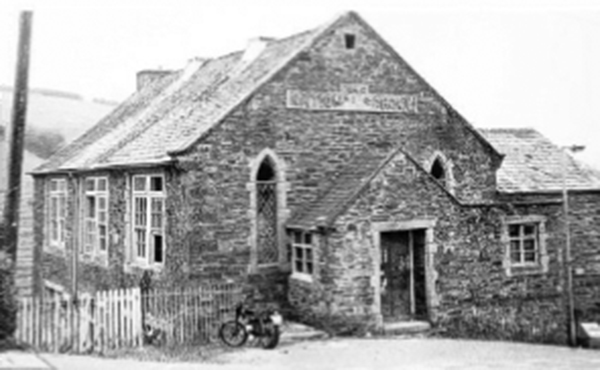.

In July 18th, 1838, it was decided at a meeting held in the Town Hall (then in the Square), with the Mayor, N. H. P. Lawrence in the chair, that the funds of St. Mary’s Sunday School be united with those of the National School; and at another meeting, similarly held, on August 28th, that schools be created for the education of boys and girls in common connection with the National Society under a grant already made by the treasurer of that Society; and that donations and annual subscriptions be earnestly requested. The affairs of the schools were also to be managed by two committees of the subscribers. A National school was a school founded in 19th century (1811) England and Wales by the National Society for Promoting Religious Education. These schools provided elementary education, in accordance with the teaching of the Church of England, to the children of the poor. Together with the less numerous British schools of the British and Foreign School Society, they provided the first near-universal system of elementary education in England and Wales.
On February 13th, 1839, there was a committee meeting at the home of Rev. G. B. Gibbons. Present were the Mayor John Cooke and six others. It was there resolved that the schools be built on the North west side of the New Road (St. Thomas Road) above Scowns, on land then owned by the Duke of Northumberland. It was also resolved that the Launceston builder, William Burt be asked to submit a report on the site and whether he could complete the building for £465. At a meeting on April 30th, 1839, the committee accepted Burt’s tender of £465 to build the schools ‘in the Willow Walk’ with the building to be completed by Michaelmas. On the May 20th, 1839 meeting, it was resolved by committee to build the schools ‘upon the spot where Mr. Shillson’s linhay now stands, adjoining Woodhouse Lane.’ The total cost under ‘Building Fund‘ for this National School was £631 3s. 3d; and this was met by subscriptions from 50 sources. In 1840, William Burt fixed a bell ‘in a neat open belfry over the front of the building’ with the bell being supplied by the Duke of Northumberland.
Although ‘1840‘ is the date that the building bears at the front, 1839 was the National and Sunday Schools commencing anniversary year. £69 12s. 8d were then the receipts, and £66 12s. 8d. the payment. Tea-drinking tickets brought in£10 15s. 10d. In 1841 Thomas Coombe and William Scown were contracted to build a hedge to the school. The accounts for 1843 show 57 subscribers. The total received was £78 17s. 7d., of which £15 15s. were from the Duke and Duchess, and £5 5s. from Sir Henry Hardinge who was re-elected, on May 20th, 1841, M.P. for Launceston. The account book for 1845 shows the receipts for the National and Sunday schools to be £75 1s. 5d. Admiral Bowles, M.P., subscribed £5 5s; St. Stephens (Rev. Polwhele), £1 2s. 8d; St. Thomas (Rev. Kendall), £1 9s; the Duke and Duchess, £15 15s; Mr. Hooper and Mrs. Fraser, the schoolmaster and schoolmistress, were paid their salary.
In 1847, an application was made to participate in Betton’s charity of £5,000 per annum. The accounts for this year show £69 8s. 9d. as the total receipts from 55 subscribers, and £1 8s.6d., the balance in hand, carried on to the ‘new book.’ Mr. Richard Hayne, however, was then the schoolmaster on the boys side; Mrs. Fraser (Frazer) continuing on the girls. Richard Hayne was also the first secretary of the Launceston Mechanics and General Institute, which saw its inception on April 5th, 1847, being founded in connection with the Society of Arts. (336)
On an entry dated September 29th, 1847 questions dealing with the Trust Deed of April 21st, 1840 were raised; the Schools being solely for the poor; in whom the management was confided; there being no ancient endowment and no rent paid for them; no charitable endowment, but depending on annual subscriptions; and the annual income and expenditure. On September 30th, 1847, the replies were sent to the Committee of the Privy Council on Education which was constituted in 1839 for the purpose of the distribution of the ‘annual grants’ to schools which had begun being made by the Government in 1834.
The school premises were then held for 70 years only; the reversion being with the Duke of Northumberland as lessee of the Park site under the Duke of Cornwall. The Duke of Northumberland had given the site for only such his interest therein; and sanction was obtained of the Lords of the Treasury and the National Society. The ‘National Society for Educating the Poor‘ on Dr. Bell’s system was founded in 1811; and eventually 13,000 schools and a million poor scholars were connected with it.
The Sunday School was removed around 1852.
0270
Visits: 156
